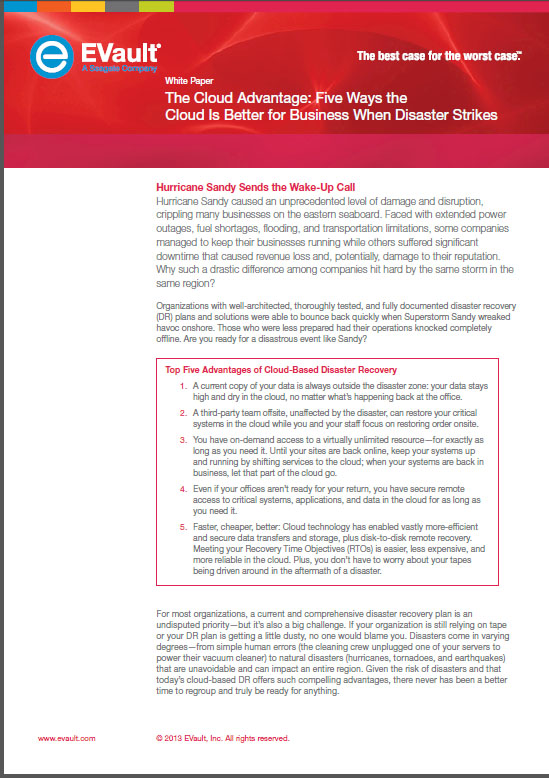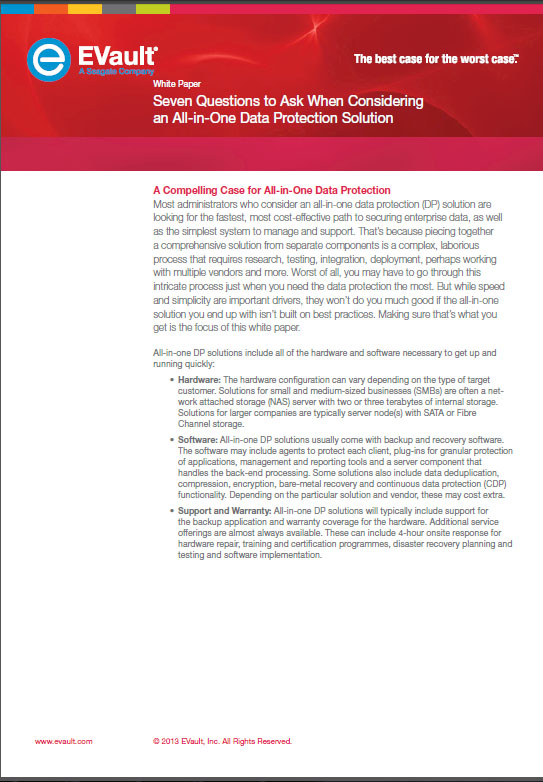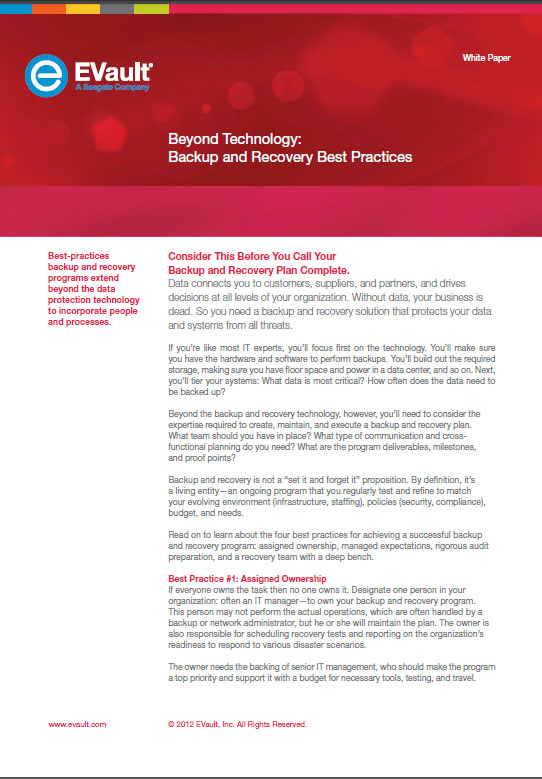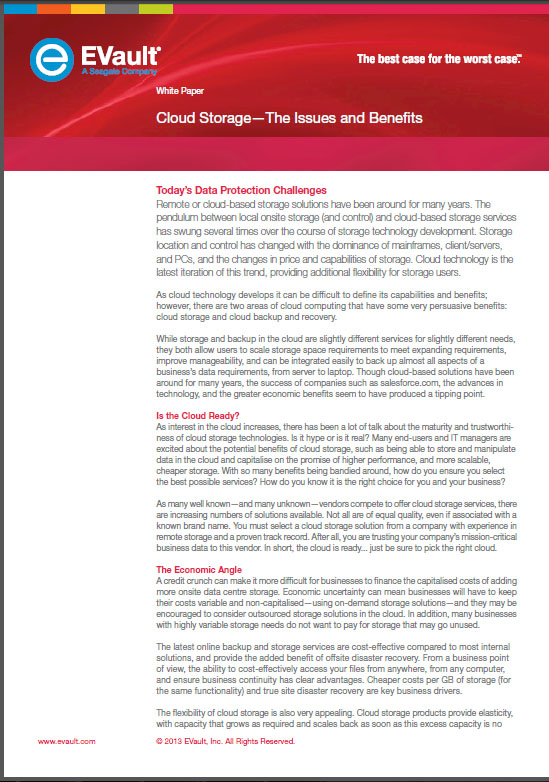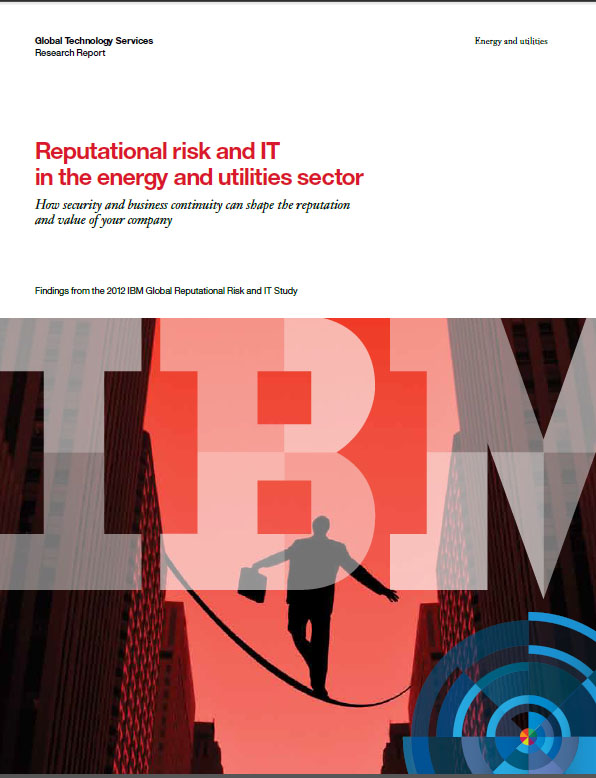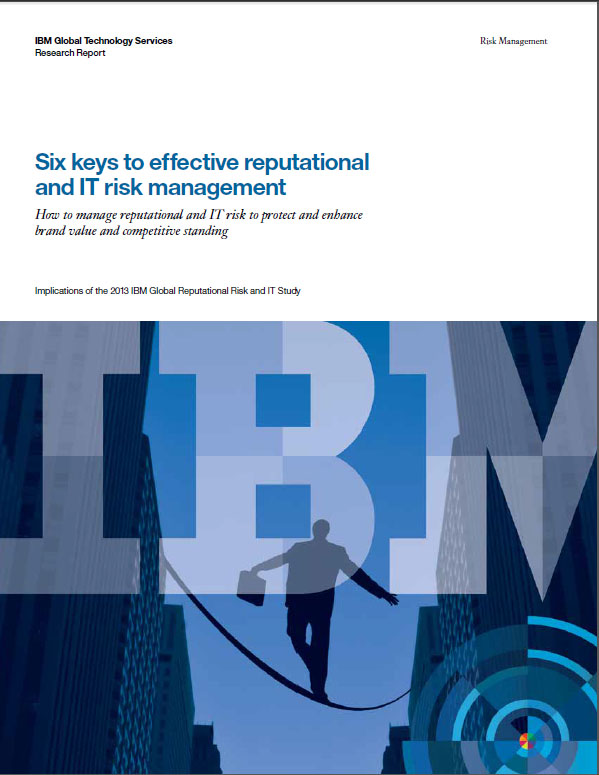The Cloud Advantage: Five Ways the Cloud Is Better for Business When Disaster Strikes
For most organizations, a current and comprehensive disaster recovery plan is an undisputed priority—but it’s also a big challenge. If your organization is still relying on tape or your DR plan is getting a little dusty, no one would blame you. Disasters come in varying degrees—from simple human errors (the cleaning crew unplugged one of
